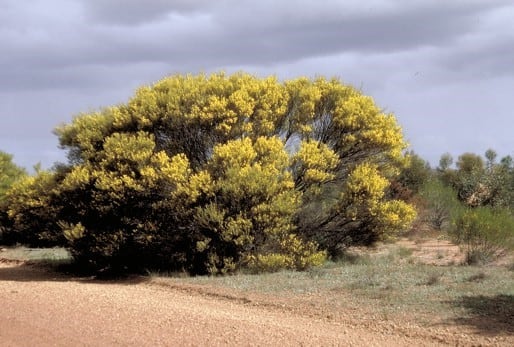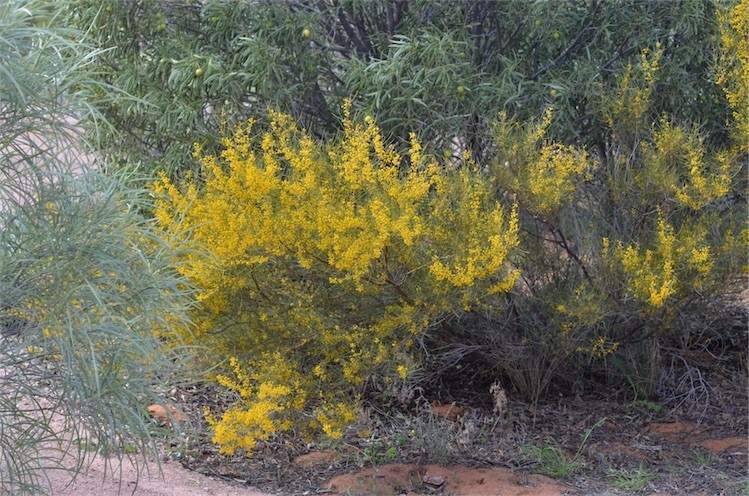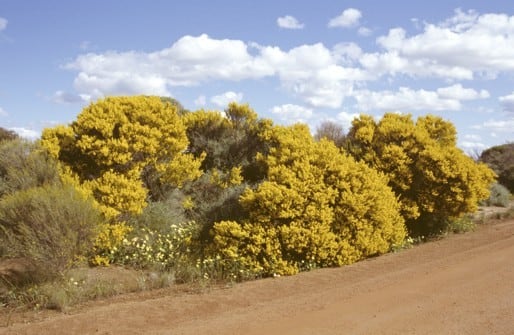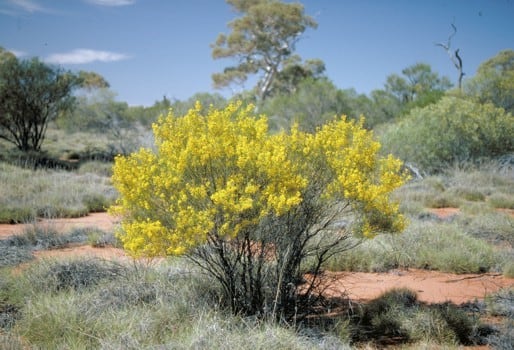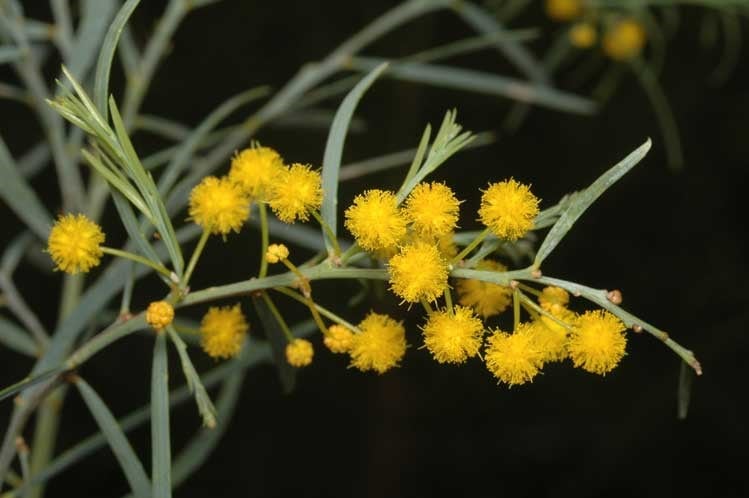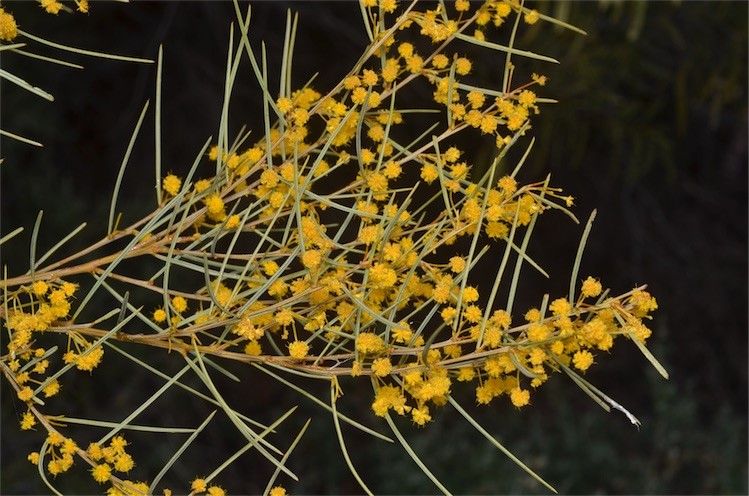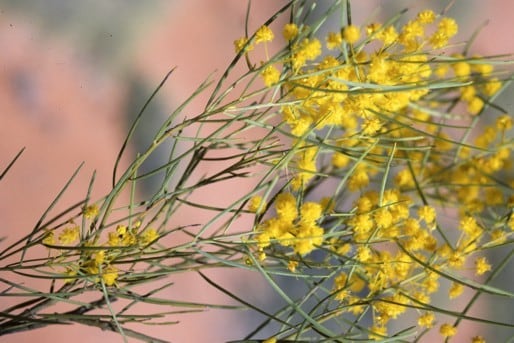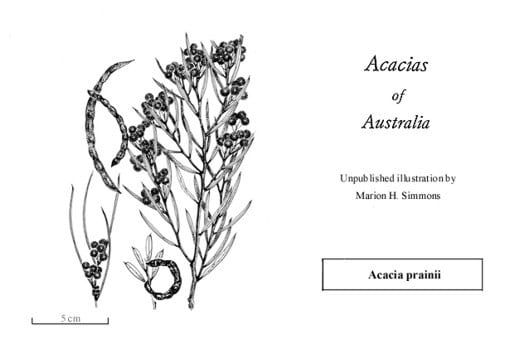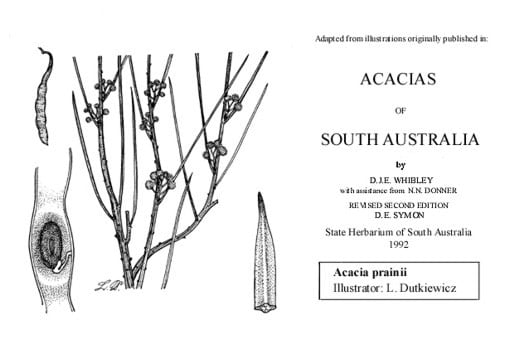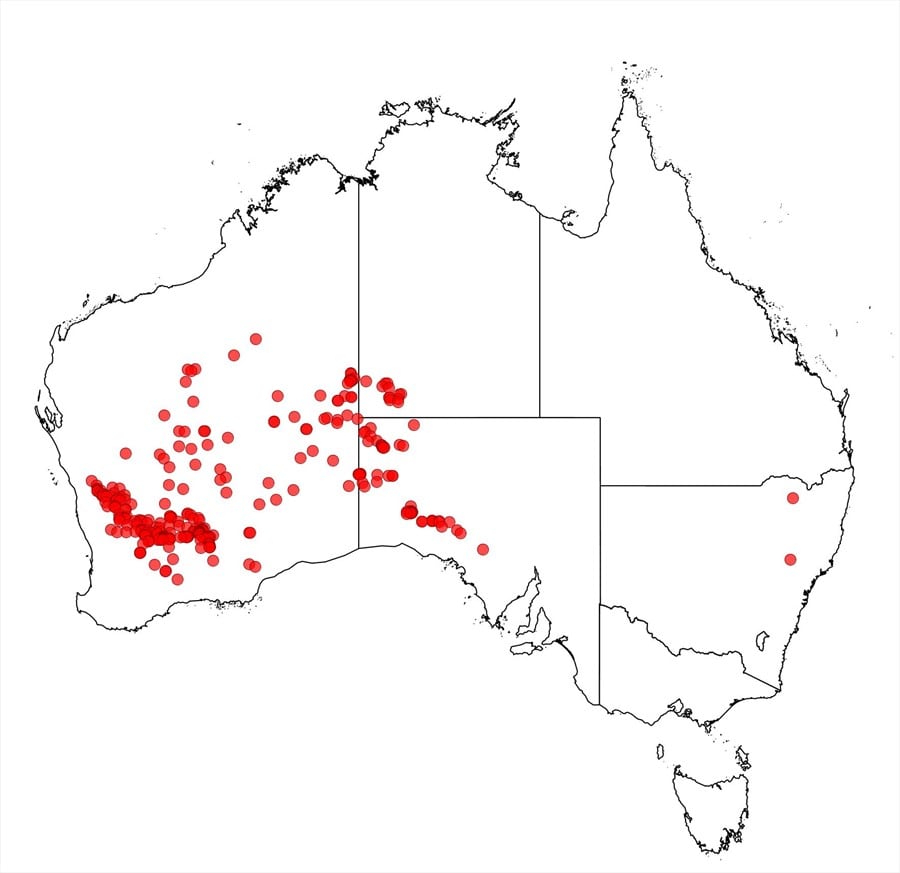Acacia prainii Maiden
WATTLE
Acacias of Australia
Common Name
Prain’s Wattle
Family
Fabaceae
Distribution
Scattered in arid and semi-arid areas from Morawa and Holt Rock, W.A., E to Lake Amadeus, N.T., and Lake Everard, S.A.
Description
Bushy glabrous shrub or tree 1.5–3 m high, sometimes 5 m. Branchlets angled at extremities, sometimes viscid especially on the fine yellow ribs. Phyllodes ascending to erect, usually linear, occasionally filiform, flat to quadrangular, 2–11 cm long, 0.5–3 (–5) mm wide, commonly pungent, smooth, normally subglaucous to glaucous; midrib and marginal nerves prominent, yellowish and sometimes viscid; lateral nerves absent; gland 2–20 mm above pulvinus, and sometimes also 3–20 mm below apex. Inflorescences 3–7-headed racemes; raceme axes 3-15 mm long, enclosed when young by imbricate brown bracts; peduncles 4–11 mm long, slender; heads showy, globular, 10–24-flowered, light golden; bracteoles absent. Flowers 5-merous; sepals free. Pods rounded over seeds, often curved, to 8.5 cm long, 5–7 mm wide, firmly chartaceous. Seeds longitudinal, oblong-elliptic to ovate, 3.5–6 mm long, slightly shiny, black, exarillate.
Habitat
Grows in sand or sandy clay in open scrub, mallee communities, Eucalyptus woodland or spinifex country.
Specimens
W.A.: Warrachuppin Rock, E of Bencubbin, C.A.Gardner 2774 (K, PERTH); 14 km N of Docker R. turnoff from Giles–Mulga Park Rd, A.S.George 12050 (PERTH, TLF); 12 km E of Coolgardie on Great Eastern Hwy, B.R.Maslin 1885 (MEL, NSW, PERTH). N.T.: Lake Neale and Lake Amadeus area, J.R.Maconochie 1899 (K, PERTH). S.A.: 5 km NE of Maralinga village, L.D.Williams 9423B (PERTH).
Notes
Acacia prainii together with A. anthochaera, A. camptoclada, A. dorsenna and A. hemiteles comprise the informal ‘A. prainii group’, fide B.R.Maslin, Nuytsia 10: 193 (1995). These are all glabrous plants with short racemes that are enclosed, when young, by scarious brown bracts, free sepals, no bracteoles, generally chartaceous pods and exarillate funicles. Members of this group are most readily distinguished by their phyllode shape and size. Acacia prainii is sometimes sympatric with A. anthochaera.
Phyllodes are variable in shape and size and future studies may show that infraspecific taxa should be recognised to accommodate this variation. In south-western W.A. the phyllodes are frequently 2–5 cm long (includes the type of A. prainii) but further E in the arid zone they may reach 11 cm (includes the type of A. prolifera). Some specimens from the Coolgardie–Widgiemooltha area, W.A., have filiform, quadrangular phyllodes less than 1 mm wide: these were described as A. prainii var. linearis (see Fig. 43Q). A few specimens have narrowly oblong, atypically broad phyllodes, to 5 mm wide and as such approach those of A. hemiteles (e.g. 4.1 km N of Holt Rock, B.R.Maslin 3937, K, PERTH). These two species possibly hybridise near Burracoppin.
FOA Reference
Data derived from Flora of Australia Volumes 11A (2001), 11B (2001) and 12 (1998), products of ABRS, ©Commonwealth of Australia
Author
Minor edits by J.Rogers
B.R.Maslin
This identification key and fact sheets are available as a mobile application:
URL: https://apps.lucidcentral.org/wattle/
© Copyright 2018. All rights reserved.
